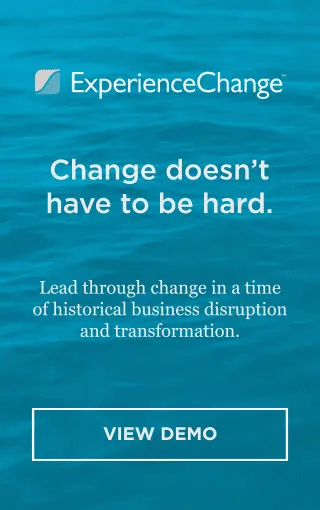In ordinary circumstances, organizational change can be an overwhelming prospect. Yet today, as we continue to face the unprecedented challenges of a global pandemic, change may seem especially difficult to consider.
It is however, the optimal time to embrace organizational change. The rapid-fire evolution of customer expectations, needs and want has been a long-standing reality, and the companies that are equipped to swiftly and innovatively redefine themselves to align with those evolutions will be the ones that survive and thrive through the challenges of the day and beyond.
To get you and your company started on the path to embracing change, we’ve selected a number of standout books that speak to all facets of this invigorating and necessary process.
Imagine It Forward: Courage, Creativity, and the Power of Change
by Beth Comstock
Beth Comstock, the former Vice Chair and head of marketing and innovation at GE has famously said, “The world will never be slower than it is right now.” It is a teaching that is especially relevant today, albeit in the context of one of the most rapidly changing times in global marketplace history. Driving home the idea that the rhythms of the world will only increase in rapidity with time, this deeply person reflection prepares any organization to be change-ready — empowering provocateurs to give themselves permission to push boundaries and to make way for growth.
Change by Design: How Design Thinking Transforms Organizations and Inspires Innovation
by Tim Brown
While this combo platter of design thinking and change management knowledge was penned in 2009, its words continue to resound as deeply today as ever. Author Tim Brown — considered the father of design thinking by many — speaks candidly to creative leaders who are seeking to instill the facets of design thinking into every corner of their organization. Brown, chair of IDEO, draws on examples from organizations such as Kaiser Permanente and Kraft, and examines the ways in which each rolled out the design thinking method to drive new alternatives for business and society.
Leading Culture Change: What Every CEO Needs to Know
by Christopher S. Dawson
Drawing on 25 years of experience as an organizational consultant, Christopher S. Dawson offers an insightful guide for leaders endeavoring to drive culture change both profoundly and sustainably in their organization. Breaking the steps down into digestible text, Dawson draws forth both practical tools and approaches to facilitating culture change, complementing each with would-be scenarios and real-life case studies. Especially helpful is a ‘red-yellow-green’ level map which readers can use to determine the degree of effort required to address strategy and culture gaps in a given organization.
Our Iceberg Is Melting: Changing and Succeeding Under Any Conditions
by John P. Kotter
Believe it or not, change can be fun — just ask John P. Kotter, widely known as a prominent thought leader in the change management realm. In this playful and inviting read, the Harvard Business School professor tells the story of Fred — an Antarctic penguin who notices early signs that the iceberg home of his colony is melting. Though he’s mocked by the majority of his friends, Fred endeavors to carefully enlist key players to help him save the colony’s home from demise. Using this clever and captivating metaphor, Kotter effectively draws any reader in with timely perceptions and invaluable lessons about managing change in a time of crisis.
Switch: How to Change Things When Change Is Hard
by Chip Heath and Dan Heath
Particularly relevant at this time in history, this insightful work opens by tackling the psychology of change, asking why change has always been so difficult for humans to reckon with. The brothers then invite the reader in by exploring both the personal and professional stories of change — from breaking the cycle of child abuse to a corporate overhaul —and dissecting the reasons why we are often hindered in the quest to evolve and move forward. Engaging and entertaining, this is an invaluable guide to successful change management at a time when adaptability and flexibility are necessary for economic survival.
